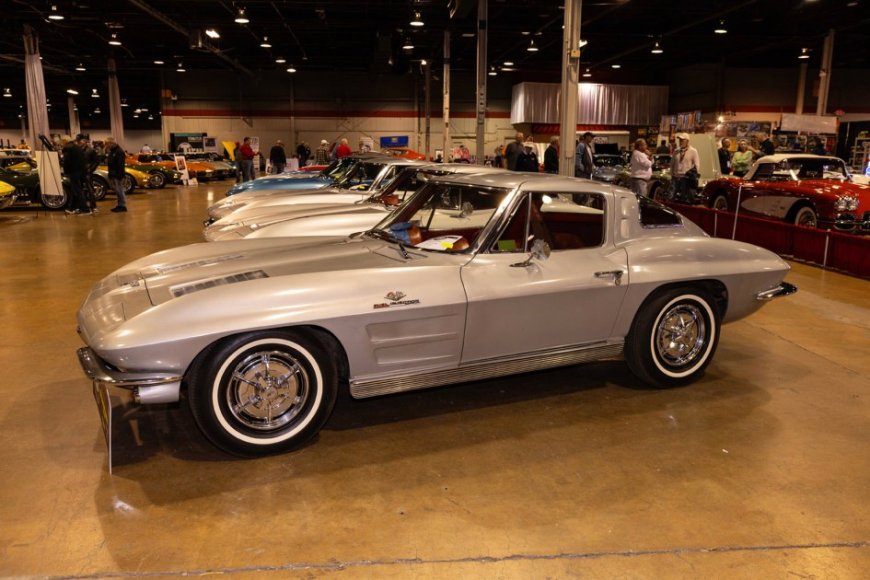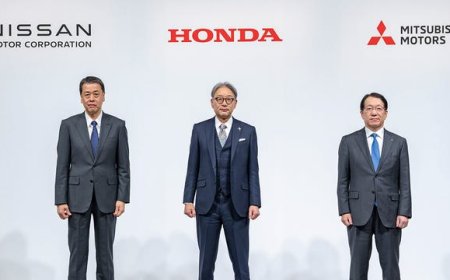The Unrestored Corvettes Of MCACN 2024
While there’s no denying the beauty inherent in a spectacularly restored Corvette, original and unrestored examples hold a special allure for many enthusiasts. Each year MCACN attracts some of the nicest unrestored Corvettes in existence, and the 2024 show was no exception. Let’s take a closer look at some of our favorites. 1963 Split-window coupes… The post The Unrestored Corvettes Of MCACN 2024 appeared first on The Online Automotive Marketplace.

While there’s no denying the beauty inherent in a spectacularly restored Corvette, original and unrestored examples hold a special allure for many enthusiasts. Each year MCACN attracts some of the nicest unrestored Corvettes in existence, and the 2024 show was no exception. Let’s take a closer look at some of our favorites.
1963

Split-window coupes have been favorites with Corvette fans since the moment they were unveiled for model year 1963. Their popularity grew continuously over the decades and surged dramatically in the past several years. This example, which is almost entirely unrestored and in remarkable condition, is extra special because it is equipped with the optional L84 fuel-injected engine. This engine, which produces 360 horsepower with help from forged aluminum pistons that provided an 11.0:1 compression ratio, an aggressive solid lifter camshaft, free-breathing cylinder heads, and the optional Rochester mechanical fuel injection. The L84 cost a very hefty $538.00 and went into 1,325 Corvettes in 1963.
As is the case with all fuelies, the engine is coupled to a 4-speed manual transmission and limited slip Positraction rear axle. The striking color combination of Sebring Silver with a red interior adds considerably to this car’s appeal.







1966

This Corvette caught our eye for several reasons, starting with its Mosport Green exterior. Though 2,300 1966 Corvettes were originally painted this one-year-only color, it’s rare that you see one today. I suspect that’s because as this unusual shade of metallic green fell out of favor in the 1980s and ‘90s many of the cars wearing it got repainted red, black, blue and other more popular colors.
Another unusual aspect of this car that helps it to stand out is the way it is equipped. As was the case since 1957, a three-speed manual transmission was standard in 1966. For $184.35, buyers could have a wide-ratio M20 or close ratio M21 three-speed manual. A heavy-duty M22 four-speed, which reportedly went into only 15 cars, cost $237. And for those who didn’t want to row the gears themselves, $194.85 secured an M35 two-speed Powerglide automatic. Out of 27,720 Corvettes manufactured in 1966, 27,156 left the St. Louis assembly plant with an optional transmission, leaving just 564 that came with the base 3-speed.
The one and only logical reason to forego one of the optional transmissions was to save the cost. The starting price for a 1966 coupe was $4,295, which was steep, so it’s entirely understandable why some buyers had to limit their choice of options. What’s difficult to understand however, is why someone would simultaneously decline to buy an optional transmission and opt for the single most expensive option offered in 1966 – air conditioning, which cost an eye-popping $412.90. But that’s exactly what the buyer of this unrestored Mosport Green coupe did.








1968

For 1967, 1968 and 1969, buyers could transform ordinary Corvettes into competitive road racers with an option called L88. The heart of the L88 option was a fire-breathing 427-cubic inch engine that produced approximately 560 horsepower courtesy of 12.5:1 compression, large-valve aluminum cylinder heads, a radical solid lifter camshaft, an 850-cfm Holley atop an open plenum high-rise aluminum intake, transistor ignition, and all forged internals. All L88 Corvettes were equipped with the F41 heavy-duty suspension, J50/J56 power assist heavy duty brakes, Positraction, and in 1967 and 1968, the M22 heavy duty four-speed. In 1969 the L88 could be coupled to a heavy-duty automatic.
In 1968 Chevrolet produced 80 L88 Corvettes and the one featured here, which has accumulated only about 5,300 miles since it was new, is undoubtedly one of the best unrestored examples to survive. Its original paint and interior are as close to new as can be, given that they are more than a half-century old. The same is true for the chassis and engine compartment, where only a handful of items have been restored.







The post The Unrestored Corvettes Of MCACN 2024 appeared first on The Online Automotive Marketplace.











































